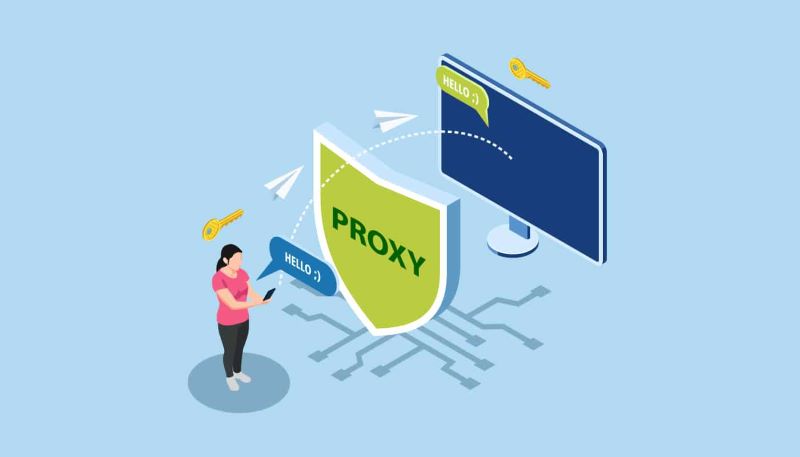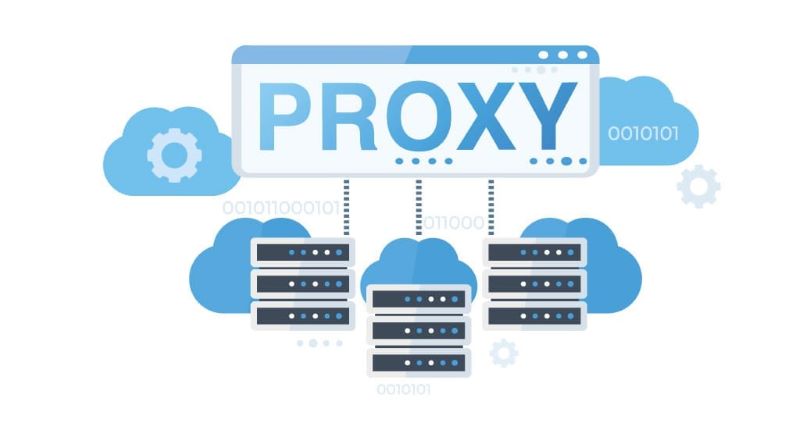In today's competitive business landscape, the quest for innovative ways to boost performance and drive growth is relentless. One powerful, yet often overlooked, tool in this pursuit is proxy incentives. Proxy incentives, a strategic approach to indirect motivation, are reshaping how companies enhance employee engagement, increase productivity, and foster a culture of excellence. By leveraging proxy incentives, businesses can unlock hidden potential within their teams, creating a ripple effect that propels the entire organization towards greater success. In this article, we will delve into the transformative power of proxy incentives and explore how they can be seamlessly integrated into modern business strategies to achieve remarkable outcomes.
Table of Contents
What are proxy incentives?
Proxy incentives are a mechanism designed to encourage a third party (referred to as a proxy) hto perform an action on behalf of another party. These incentives are typically offered in the form of financial or non-financial rewards to motivate the proxy to act in a way that benefits the principal party.

In the context of blockchain and cryptocurrency, proxy incentives are commonly used within decentralized governance systems. Token holders can delegate their voting rights to a proxy, who will vote on their behalf in governance decisions. To ensure proxies act in the best interest of the delegators, they may be provided with incentives such as a share of transaction fees or newly generated tokens.
Types of Proxy Incentives
Proxy incentives are not just rewards but strategic tools designed to boost performance and employee engagement. The variety of incentive forms allows businesses to flexibly choose and combine them to align with their goals and culture.
Bonuses
Cash: The most direct and common form, cash bonuses based on individual or collective performance are a simple and effective way to recognize achievements.
Stocks: Stock rewards: Offering stock rewards ties employees to the company's success, motivating long-term commitment and contributions to overall growth.
Equity
Ownership: Providing employees with partial ownership of the company through programs like ESOP (Employee Stock Ownership Plan) or similar structures. This is not only a reward but an investment in the future of both the employees and the company.
Enhanced Engagement: Equity makes employees feel like integral parts of the company, increasing their commitment and dedication to their work.
Non-Financial Benefits
Additional Leave: Rewarding extra leave days is an effective way to acknowledge employees' dedication and help them recharge.
Training Opportunities: Investing in employees' professional development through training courses, workshops, or scholarship programs is a valuable long-term incentive.
Recognition: Public recognition and rewards not only boost employee morale but also create a positive work environment that encourages creativity.

Businesses can combine different types of proxy incentives to create a comprehensive reward system tailored to individual and team needs. This approach maximizes the effectiveness of incentive programs, ensuring that every employee feels recognized and motivated to contribute their best to the company.
Applying Proxy Incentives in Business Strategy
Proxy incentives are not merely rewards; they are powerful strategic tools that help businesses achieve key objectives. Skillful application of these incentives can lead to exceptional benefits in performance, employee engagement, and profit optimization.
Boosting Performance
By setting clear goals and rewarding achievements appropriately, proxy incentives create strong motivation for employees. When employees know their efforts will be recognized and rewarded, they tend to work harder, be more creative, and achieve better results.
Enhancing Employee Engagement
Proxy incentives are not just material rewards but also a form of recognition and appreciation for employees' contributions. This helps create a positive work environment where employees feel respected and valued, thus increasing engagement and loyalty to the company.

Attracting and Retaining Talent
In today's competitive labor market, attracting and retaining talent is a significant challenge for businesses. Proxy incentives, especially attractive benefits like company equity, career advancement opportunities, and professional development, can be a decisive factor in attracting and retaining top talent.
Optimizing Profits
While proxy incentives require an initial investment, the benefits they bring in terms of performance and employee engagement can far outweigh the costs. By designing a balanced proxy incentive system, businesses can ensure that the incentive program not only benefits employees but also contributes to the company's growth and profitability.
Designing an Effective Proxy Incentives System
Creating an effective proxy incentives system requires careful consideration and a strategic approach. A well-designed system not only boosts performance but also fosters a positive work environment where employees feel recognized and motivated to give their best.
Define Clear Objectives
Before designing a proxy incentives system, it’s crucial for businesses to clearly define the program’s objectives. Are you aiming to increase sales, improve product quality, enhance customer satisfaction, or drive innovation? Each objective requires a different approach and type of incentive.
Measure Performance
To assess the effectiveness of a proxy incentives program, measuring employee performance is essential. The metrics should be specific, measurable, and aligned with the program’s goals. For instance, if the goal is to increase sales, you might use metrics like revenue, number of new customers, or conversion rates.

Build a Fair and Transparent Reward System
A fair and transparent reward system is vital to the success of any proxy incentives program. Employees need to understand the evaluation criteria and how rewards are calculated. The system must ensure fairness, non-discrimination, and provide opportunities for all employees to earn rewards.
Regularly Evaluate and Adjust
A proxy incentives system is not a static formula; it requires regular evaluation and adjustments to remain effective and aligned with changing business environments and employee needs. Businesses should monitor the program’s effectiveness, gather employee feedback, and make necessary adjustments to keep the program engaging and productive.
Case Studies
To clearly illustrate the effectiveness of proxy incentives in boosting performance and employee engagement, let's look at some real-world examples from leading companies.
The tech giant is renowned for its innovative work environment and attractive benefits package. Beyond competitive salaries, Google offers numerous proxy incentives such as company stock options, performance-based bonuses, training and development opportunities, and on-site amenities like free meals, gyms, and healthcare services. These incentives have helped Google attract and retain top talent, thereby maintaining high levels of employee satisfaction and engagement.

Microsoft
Microsoft exemplifies the use of proxy incentives to drive performance and employee engagement. The company has a clear and transparent performance-based reward program, helping employees understand what they need to achieve to earn rewards. Additionally, Microsoft offers career training and development opportunities, as well as recognition programs to acknowledge employee contributions.

Starbucks
The famous coffee chain has built a strong corporate culture based on respect and care for its employees. Starbucks provides proxy incentives such as health insurance, tuition reimbursement programs, and company stock options. These incentives have significantly reduced employee turnover rates and built a dedicated and passionate workforce.

These examples demonstrate that proxy incentives can deliver significant benefits to businesses, from increasing performance and employee engagement to attracting and retaining top talent. By designing and implementing a proxy incentives system aligned with their culture and goals, companies can create a positive work environment where employees feel recognized and motivated to give their best.
The future of proxy incentives
The future of proxy incentives is undergoing a robust transformation, driven by technological advancements, shifts in the workplace environment, and increasing emphasis on sustainability and social responsibility.
Key Trends Shaping the Future of Proxy Incentives
- Personalization and Flexibility: Traditional incentive programs are gradually giving way to more personalized and flexible rewards, tailored to individual preferences and needs. Employees will have more autonomy in choosing rewards that align with their values and motivations, thereby enhancing satisfaction and engagement.
- Focus on Non-Financial Incentives: While financial rewards remain important, non-financial incentives such as flexible work schedules, career development opportunities, recognition programs, and experiential rewards are increasingly valued. These incentives cater to diverse employee needs and promote holistic well-being.
- Integration of Technology: Technology will play a pivotal role in streamlining and automating proxy incentives programs. Particularly, blockchain technology offers significant potential in transparent and secure management and distribution of rewards. Smart contracts can automate the entire process, from performance tracking to reward calculation and distribution, eliminating intermediaries and ensuring fairness and accuracy.
- Alignment with ESG Goals: Environmental, Social, and Governance (ESG) factors will increasingly influence the design of proxy incentives. Companies will prioritize incentives that encourage sustainable practices, positive social impacts, and ethical behaviors, linking these incentives with core business values.
- Data-Driven Decision Making: Data analytics and machine learning will be leveraged to gain deeper insights into employee behaviors and preferences. This data-driven approach allows businesses to design more effective and tailored incentive programs that align with the workforce.
- Focus on Long-Term Value Creation: Proxy incentives will shift from short-term performance bonuses to rewards that promote long-term value creation. This includes equity-based incentives, profit-sharing programs, and rewards tied to achieving strategic goals beneficial to both the company and stakeholders.
- Gamification and Social Recognition: Elements of gamification and social recognition platforms will be integrated into incentive programs to make them more engaging and interactive. These elements can harness employees' intrinsic motivations and foster team spirit and healthy competition.
Role of Blockchain in Proxy Incentives
Blockchain technology stands poised to revolutionize proxy incentives by providing a transparent, secure, and tamper-proof platform for managing and distributing rewards. Blockchain-based tokens can serve as incentives, granting employees ownership stakes in the company's success and aligning their interests with organizational benefits. This potential shift can lead to increased participation, productivity, and foster a strong ownership mentality among employees.

Challenges and Considerations
While the future of proxy incentives looks promising, there are several challenges to consider:
- Privacy Concerns: The use of data analytics in incentive programs raises privacy concerns among employees. Companies must ensure that data collection and usage are ethical and transparent.
- Regulatory Compliance: As proxy incentives become more complex and involve new technologies like blockchain, organizations need to navigate evolving legal landscapes to ensure compliance.
- Balancing External and Internal Motivations: While external rewards such as bonuses are effective motivators, it's crucial to balance them with intrinsic motivations stemming from factors like personal development, purpose, and recognition
Summary, proxy incentives are not just a conventional performance management tool but a crucial strategy to drive sustainable business development in the digital age. With their flexibility and diversity, proxy incentives can be tailored to fit any type and scale of organization. Implementing a carefully designed proxy incentives system, businesses can create a positive work environment where employees feel recognized and motivated to contribute their best. Moreover, proxy incentives help businesses attract and retain talent, enhance productivity, and ultimately achieve business goals.
Furthermore, the advancement of technology, especially blockchain, is opening up new opportunities for effectively and transparently applying proxy incentives. With the potential for automation and fair distribution of incentives, blockchain promises to be a powerful tool for businesses to optimize their proxy incentives strategies, creating sustainable value for both the business and its employees. Follow U2U Network to update the latest information about Blockchain





.png)
